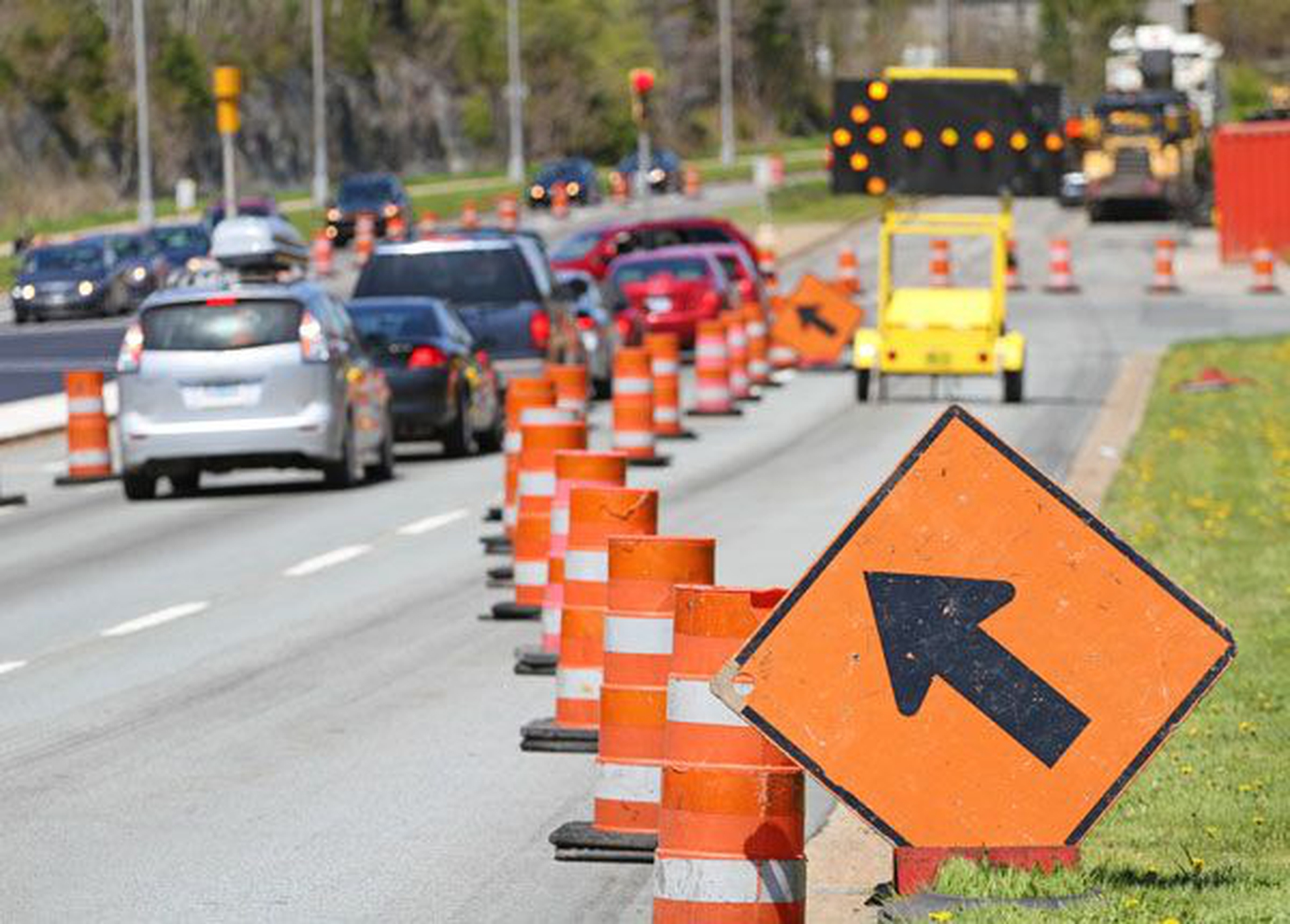Get ready to dive into the world of road construction! We’re going to talk about Right of Way (ROW) – the space needed to build the roads that connect us. It’s a balancing act of considering traffic volume, road design, and the surrounding environment, all while ensuring safety and future expansion. Let’s hit the road and understand ROW!
ROW in Road Construction: Your Guide to the Road Ahead
Picture this: you’re about to build a new road. Sounds simple, but before the first layer of asphalt is laid, you need to consider the right-of-way (ROW) – the foundation of your road project.
What Exactly is ROW?
ROW is the strip of land reserved for the road and all its necessary components. This includes the road surface, sidewalks, utilities, and space for potential expansions. Imagine it as a designated pathway for the entire road infrastructure.
Different Types of ROWs
Just like roads, ROWs come in different forms:
| Type of ROW | Description |
|---|---|
| Private ROW | This type belongs to individual landowners, such as a driveway leading to a house. |
| Public ROW | This one belongs to the government and is intended for public use, like the roads we use every day. |
| Pipeline ROW | This type is specifically reserved for pipelines. It encompasses the land above and around the pipeline, ensuring safe and accessible operation. |
Factors Influencing ROW Width and Alignment
Determining ROW size isn’t a one-size-fits-all approach. Several factors come into play:
- Road Design: A winding country road will have different ROW needs than a multi-lane highway in a busy city.
- Traffic Volume: Roads designed for heavier traffic require wider ROWs to accommodate more lanes and ensure smooth traffic flow.
- Surrounding Land Use: The type of development surrounding the road, whether residential, commercial, or industrial, influences the ROW’s width and alignment.
Why is ROW Management Important?
Think of ROW management as the behind-the-scenes work that keeps road projects running smoothly. Here’s why it matters:
- Land Acquisition: Securing the necessary land for the ROW often involves negotiations with private landowners, requiring careful planning and communication.
- Utility Coordination: Roads often share space with underground utilities. Coordinating with utility companies ensures these services are correctly accommodated within the ROW.
- Regulatory Compliance: Numerous regulations and permits are tied to ROWs, covering everything from environmental impact to construction standards.
The Bigger Picture: ROW’s Impact
Beyond road construction, ROWs play a larger role in:
- Urban Planning: Defining ROWs is critical in shaping how cities and towns grow and develop.
- Transportation Systems: Efficient transportation systems rely heavily on well-planned ROWs.
- Land Values: The presence of a ROW can significantly influence the value of adjacent land.
The Takeaway: Knowledge is Your Best Tool
Understanding ROWs is essential for anyone involved in road construction. This knowledge ensures projects stay on track, avoid legal hurdles, and contribute to safer and more efficient transportation systems.
What is Right-of-Way (ROW) in Road Construction?
Imagine driving down the street and hitting a dead end! That’s where ROW steps in. It’s the designated zone for anything road-related, encompassing the road itself, shoulders, and surrounding space. ROW considers future road expansions and accommodates essential services like water pipes and power lines.
Legally, ROW is typically an easement. This means the government isn’t buying the land outright but obtaining permission to use it for roads. Landowners next to the road retain their property rights but cannot obstruct the designated ROW.
Acquiring ROW can involve negotiation, purchase, or legal processes. Interestingly, the final cost is often determined during construction authorization.
Several factors influence how much land is designated as ROW:
- Traffic Volume: A road designed for heavy traffic will require a wider ROW than a quiet residential street.
- Road Design: A multi-lane highway demands a more extensive ROW than a two-lane country road.
- Surrounding Environment: The ROW might need adjustments to accommodate natural features or minimize environmental impact.
- Future Expansion: A larger ROW might be necessary to accommodate future road widening or the addition of bike lanes and sidewalks.
Key Takeaways:
- ROW is the road’s dedicated space: It includes the road surface, supporting structures, space for future upgrades, and utilities.
- ROW isn’t always a straight line: It can curve around existing features and widen in certain areas to accommodate future growth.
- The government usually obtains an easement: ROW allows the government to use the land for roads, but neighboring landowners retain some rights.
- Acquiring ROW varies by situation: It depends on the specific property and landowners involved.
- Traffic, design, environment, and future plans are crucial: These factors determine how much land is designated as ROW.
Citation:
How Does ROW Impact Road Design and Planning?
Imagine piecing together a giant puzzle, but instead of cardboard, you’re working with land, roads, and buildings. That’s road planning! And just like any puzzle, you need all the right pieces, with ROW being a crucial one.
ROW Acquisition: It’s All About Location
Before laying down asphalt, you need to secure the land – that’s ROW acquisition. Sometimes it’s simple, involving purchases from willing sellers. Other times, it becomes complex, requiring legal processes and negotiations that impact project cost and timeline.
The acquired ROW directly influences the road’s design. A smaller ROW might mean a narrower road with fewer lanes, while a larger ROW offers flexibility for bike lanes, wider shoulders, or sound barriers for nearby residents.
Designing with ROW in Mind: A Balancing Act
Once you know the land availability, you can begin designing the road. This involves creating a safe and efficient road that complements the environment.
Considerations include the number of lanes, shoulder placement, median necessity, and drainage solutions. Future planning is crucial. Will a two-lane road need widening in the future? Will the neighborhood experience increased traffic? Planning for growth with a larger ROW upfront can prevent headaches down the line.
Surveying the Scene: Precision is Key
In road design, accurate surveying is paramount. Professional surveyors meticulously map property lines, locate underground utilities (water pipes, gas lines, fiber optic cables), and identify any environmental concerns. This meticulous work helps avoid costly surprises during construction.
The Big Picture: Why ROW Matters
ROW is the foundation upon which every road is built. Getting it right ensures:
- Smoother Construction: Clearly defined ROW boundaries and accurate surveys keep projects on schedule.
- Safer Roads: Adequate ROW allows for wider lanes, shoulders, and clear zones, enhancing safety.
- Efficient Traffic Flow: Properly planned ROW accommodates future traffic growth and prevents bottlenecks.
- Minimized Environmental Impact: Careful consideration of ROW helps protect natural resources and minimizes ecological disruption.
ROW is a critical aspect of road design and planning. By understanding its significance and incorporating it into every project stage, we create functional, safe, efficient, and environmentally responsible roads.
Enhance your construction project with a comprehensive construction materials list. Find essential materials for road construction and learn about potential retention fees.
What Factors Influence ROW Determination?
Determining the ideal width for a right-of-way (ROW) involves a thoughtful process that considers various factors to ensure the road is safe, efficient, and adaptable for the future.
Traffic Volume and Future Projections
The number of vehicles expected to use the road daily is a primary consideration. Higher traffic volumes necessitate wider roads and, consequently, a larger ROW. Future population and traffic growth projections are also crucial to ensure the ROW can accommodate future demands.
Road Classification and Design
The type of road being built significantly impacts ROW. A major highway with multiple lanes, emergency lanes, and a median requires a considerably larger ROW than a quiet residential street.
Surrounding Land Use and Development
The type of development surrounding the road influences the ROW. A road passing through a busy downtown area might need a wider ROW to accommodate delivery trucks, parking, and bike lanes, while a road in a rural area with minimal development can have a smaller ROW.
Environmental Considerations
Protecting the environment is paramount. The ROW might need to be wider in certain areas to accommodate natural features like streams, wetlands, or steep slopes. This ensures minimal disruption to ecosystems and allows for the implementation of environmentally friendly drainage solutions.
Future Planning and Expansion
Anticipating future needs is essential. If the area surrounding the road is slated for future development, the ROW should be wide enough to accommodate potential road widening, the addition of sidewalks, or the installation of utilities.
Key Points:
- Definition: Right-of-Way (ROW) is a designated land strip reserved for road construction and infrastructure, including the road surface, sidewalks, utilities, and future expansions.
- Types of ROWs:
- Private ROW: Owned by landowners (e.g., driveways)
- Public ROW: Owned by the government (e.g., public roads)
- Pipeline ROW: Reserved for pipelines
- Factors Influencing ROW Width and Alignment:
- Road design
- Traffic volume
- Surrounding land use
- Importance of ROW Management:
- Land acquisition and negotiation
- Utility coordination
- Regulatory compliance
- Impact of ROWs:
- Urban planning
- Transportation systems
- Land values
- Key Takeaway: Understanding ROWs is crucial for successful road construction, preventing legal issues, and contributing to efficient transportation systems.
Condensed & Organized Context:
Definition and Scope of Right of Way
- ROW is the land dedicated to road construction.
- It includes the roadway itself, shoulders, berms, and any necessary infrastructure.
- ROW may extend beyond the physical road to accommodate future enhancements and utilities.
Legal Ownership and Rights
- ROW is usually an easement, not absolute ownership by local governments.
- The public has the right to travel on ROW, but abutting property owners retain certain rights.
- Upon vacation of a road, ROW generally reverts to the adjacent property owners.
Acquisition of Right of Way
- ROW acquisition involves negotiations with landowners to purchase or obtain easements.
- In some cases, condemnation proceedings may be necessary.
- The cost of ROW is often determined during the construction authorization stage.
Factors Influencing Right of Way Width
- Traffic volume and projected growth affect ROW width requirements.
- Road design, including lane configurations and medians, impacts ROW dimensions.
- Environmental considerations and landscaping may require additional ROW space.
- Future development plans and potential expansions influence ROW planning.
Unique Insights:
- Potential Environmental Impacts: ROW acquisition can affect natural habitats and ecosystem services. Exploring sustainable ROW practices and mitigating environmental impacts could be further analyzed.
- Smart City Applications: ROW can be utilized for smart city infrastructure, such as traffic sensors, fiber-optic networks, and electric vehicle charging stations.
- Community Engagement and Access: ROW can facilitate community development by providing access to parks, trails, and other amenities. Understanding the social and economic implications of ROW could enhance the article’s value.
- NYT Connections Answer: Hedgehog, Pineapple, Cactus The Spiky Things Explained - April 20, 2025
- How to Clean a Wool Carpet: A Comprehensive Guide - April 20, 2025
- How to Clean a Pleather Couch: A Complete Guide - April 20, 2025










